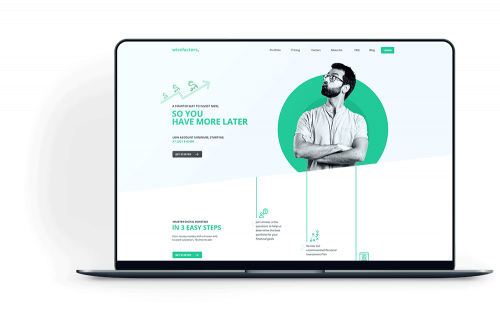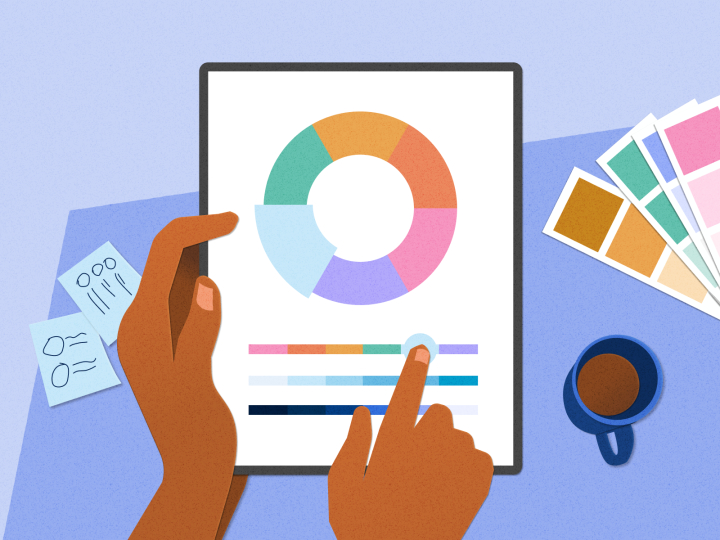Checking Out Different Sorts Of Internet Style to Boost User Experience
In the ever-evolving electronic landscape, the expedition of diverse web style methodologies is vital for boosting individual experience. From receptive frameworks that adjust seamlessly throughout devices to minimal designs that prioritize simpleness and clarity, the options made in website design can profoundly influence usability and interaction. Integrating interactive aspects more enhances the individual journey, making websites more vibrant and engaging. Just how do these techniques collectively contribute to a user-centric electronic environment that not only captivates yet also preserves users? The solution may exist in the nuanced balance in between aesthetic allure and practical availability.
Receptive Website Design
In an age where digital intake goes beyond multiple gadgets, receptive internet design has actually ended up being a foundation of effective customer experience. The universality of smartphones, tablets, and differing screen dimensions requires websites that adjust effortlessly to any type of screen. Responsive website design (RWD) utilizes flexible formats, liquid grids, and media questions to make sure that website make effectively, offering optimal functionality across gadgets. This adaptability not just improves aesthetic allure however likewise improves ease of access and navigation, important for retaining customer involvement.
The execution of RWD begins with a mobile-first strategy, focusing on the tiniest display dimension to assure functionality and aesthetic coherence. By using CSS media queries, designers can tailor the site's look based on the qualities of each device. This ensures that images scale properly, text stays readable, and interactive elements are conveniently accessible, consequently minimizing the requirement for extreme scrolling or resizing.
Additionally, receptive style contributes to improved search engine optimization (SEO) by providing a regular customer experience and lowering bounce prices. Browse engines prefer mobile-friendly sites, making responsiveness an indispensable part of digital technique. Essentially, responsive internet layout is indispensable for accommodating varied individual interactions, fostering a interesting and inclusive on the internet presence.
Minimalist Design Approaches
Minimalist style's appeal lies in its ability to distill complex details into its most important elements, creating a intuitive and minimalist individual experience. By prioritizing simplicity, minimal layout gets rid of nonessential details, allowing users to concentrate on core web content and performance. This approach is identified by enough white room, clean lines, and a limited color scheme, all of which add to a cosmetically pleasing and effective interface.

Additionally, minimal design sustains faster loading times, as less visual components and minimized content complexity can lower the amount of data called for to provide a website. This efficiency not only enhances user contentment however additionally adds to much better search engine optimization (SEARCH ENGINE OPTIMIZATION) rankings. Consequently, minimal layout is not just a stylistic option but a strategic method that can dramatically impact individual engagement and conversion prices.
Interactive and Dynamic Elements
Interactive and vibrant elements are essential in boosting customer interaction and creating memorable web experiences. These aspects include animations, hover impacts, sliders, and real-time updates, which not only capture users' attention but additionally promote seamless navigating. By integrating these features, designers can change fixed pages right into appealing electronic atmospheres that urge interaction and exploration.
Animations, for instance, can lead users through facility information without browse around this web-site overwhelming them, while hover effects provide prompt responses, boosting the customer's understanding of clickable locations. Web Design Gauteng. Furthermore, sliders permit customers to see web content at their very own pace, and real-time updates guarantee that info presented is present and pertinent, maintaining the customer's interest

User-Centric Style Approaches
A keystone of efficient internet style is the execution of user-centric design strategies, which focus on the requirements and choices of completion customer most of all else. By concentrating on the user, developers can create instinctive, accessible, and interesting experiences that improve fulfillment and drive interaction. User-centric layout includes detailed study to recognize the target audience's challenges, actions, and goals. This research is essential for developing personas and scenarios that assist layout choices, guaranteeing the last item reverberates with individuals.
One basic strategy is usability testing, which entails observing real individuals as they engage with the layout. This process identifies pain factors and locations for improvement, enabling developers to fine-tune the interface iteratively. Integrating comments loopholes and agile methodologies better makes sure the design progresses abreast with individual assumptions.
Furthermore, accessibility is a crucial part of user-centric design. Guaranteeing that electronic systems are available to all individuals, consisting of those with disabilities, improves inclusivity and expands the possible user base. This can be accomplished with conformity with Internet Content Availability Standards (WCAG) and the thoughtful application of design concepts like comparison, readability, and navigation.
Ultimately, successful user-centric style cultivates a smooth connection between the customer and the digital environment, boosting total individual experience.
Applying Newest Layout Trends
In the world of internet layout, remaining abreast of the newest style trends is essential for developing practical and visually compelling interfaces that astound individuals. Minimalist style, defined by clean lines and adequate white space, enables users to focus on material without unneeded distractions.

In addition, incorporating the newest typography fads, such as variable typefaces, supplies versatility and versatility throughout various devices and display sizes, ensuring consistency in customer experience. Ultimately, dark setting designs have gotten popularity because of their aesthetic appeal and energy efficiency on OLED displays. By purposefully carrying out these trends, web developers can produce cutting-edge and straightforward internet sites that resonate with contemporary audiences.
Verdict
A detailed exploration of different web design methodologies is essential for enhancing customer experience. Inevitably, a balanced and educated method to web layout considerably boosts individual contentment and interaction, leading to boosted general site performance and success.
In the ever-evolving electronic landscape, the exploration of varied web design methodologies is vital for boosting individual experience.A foundation of reliable internet style is the implementation of user-centric design methods, which prioritize the demands and choices of the end user over all else. Making sure that electronic systems are accessible to all individuals, including those with impairments, enhances inclusivity and broadens the potential customer base.In the world of web design, staying abreast of the latest layout fads is essential for developing aesthetically engaging and useful interfaces that mesmerize individuals (Web Design Gauteng).A thorough expedition of numerous web design approaches is essential for boosting user experience